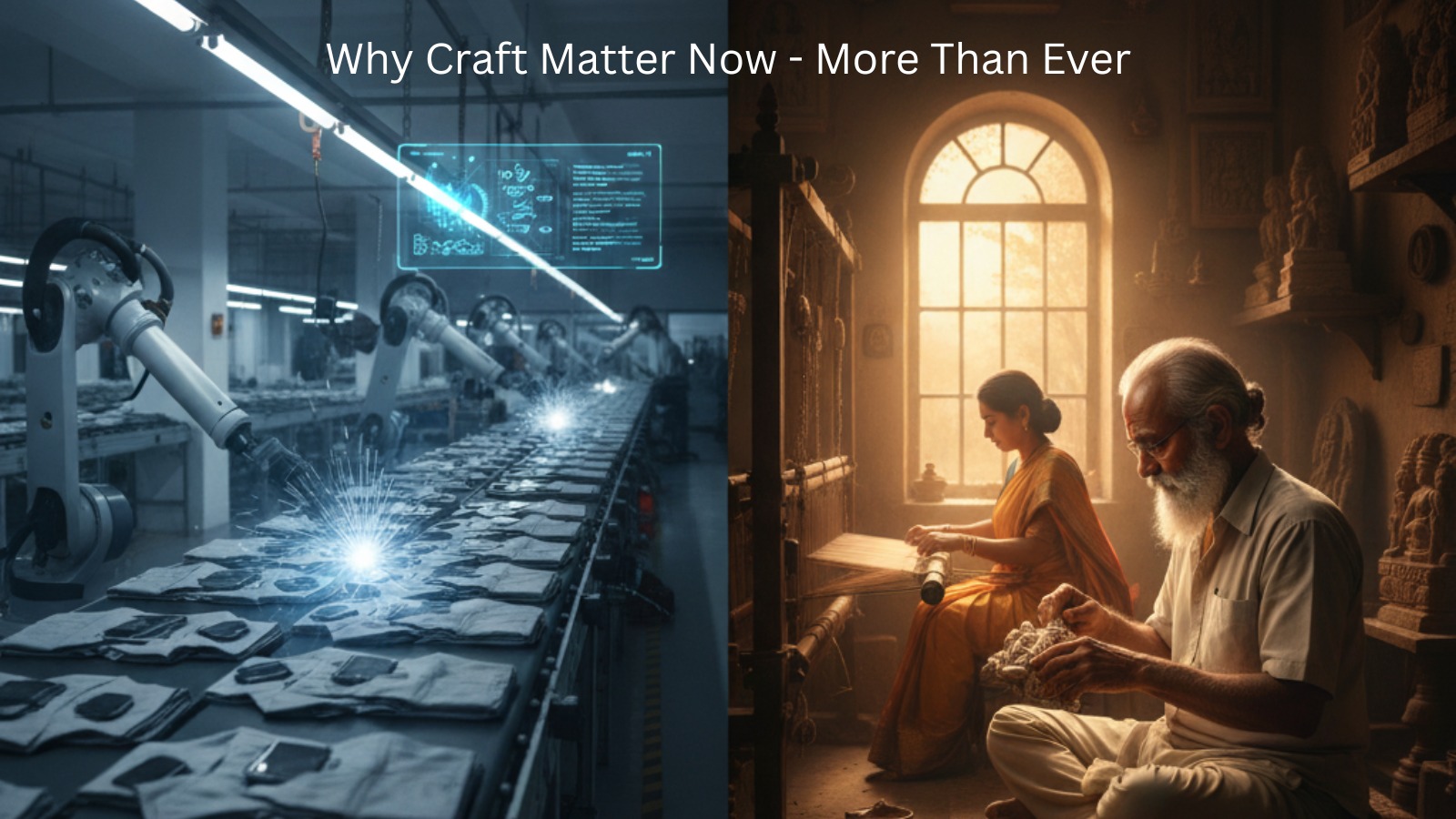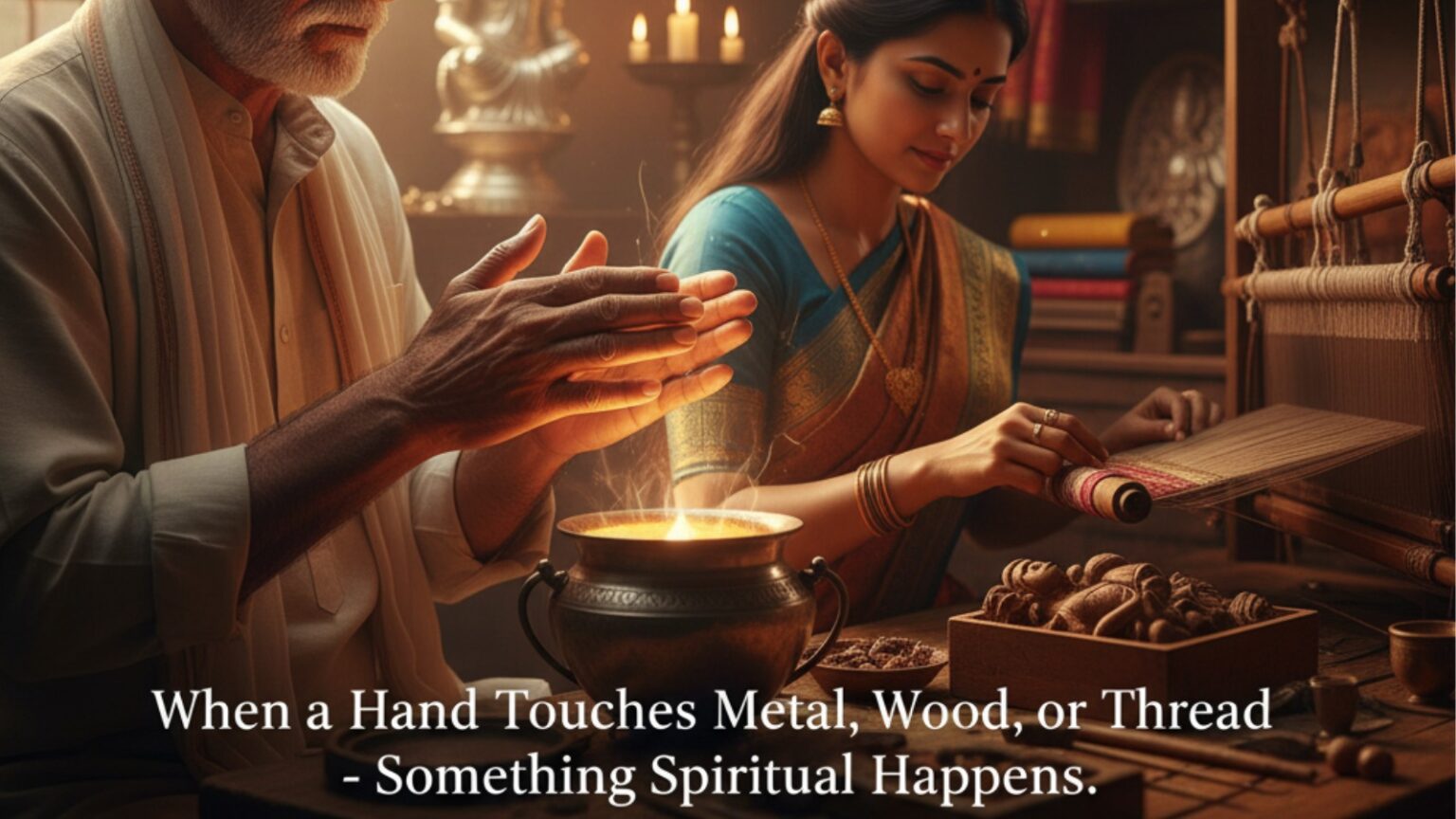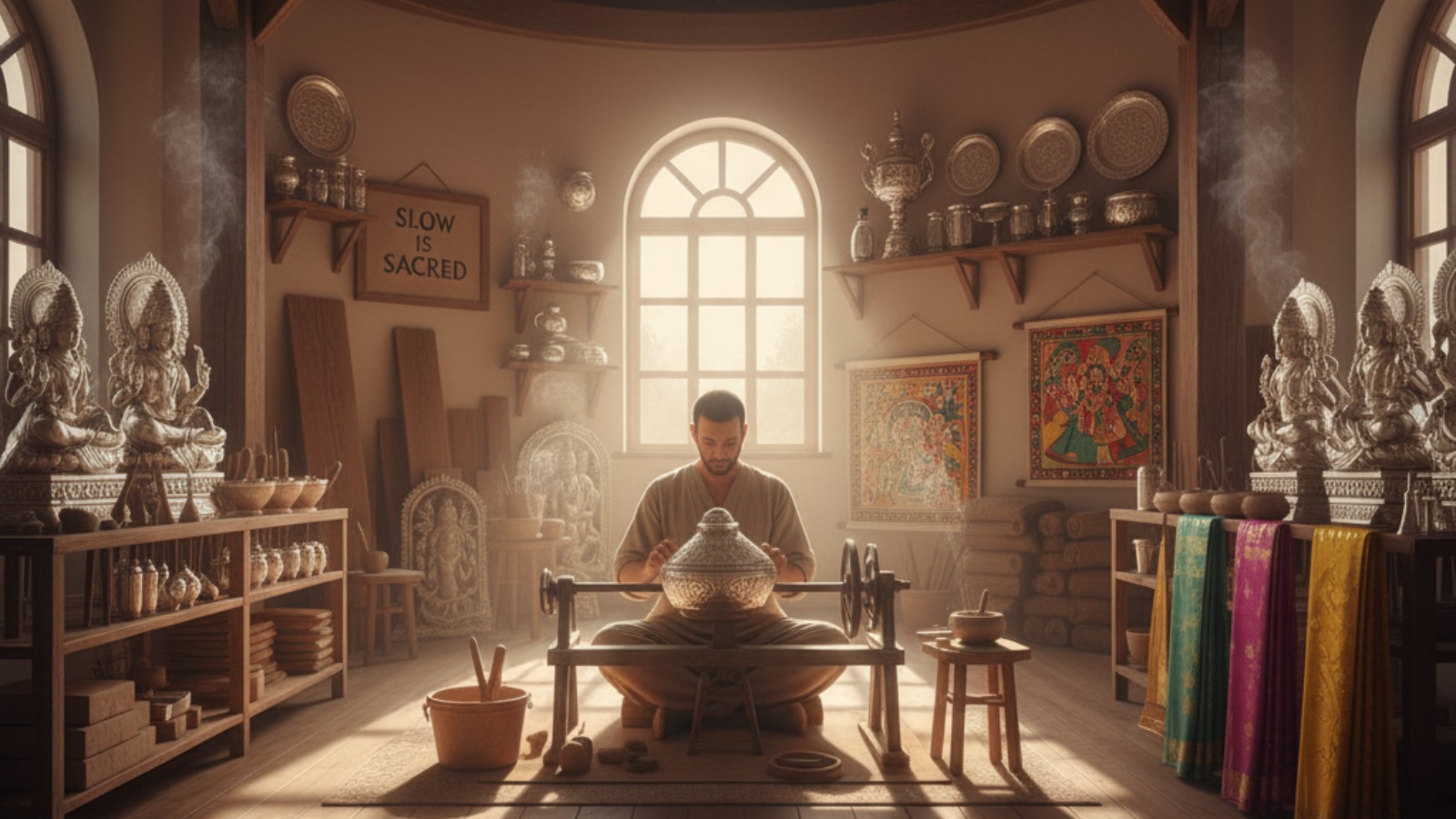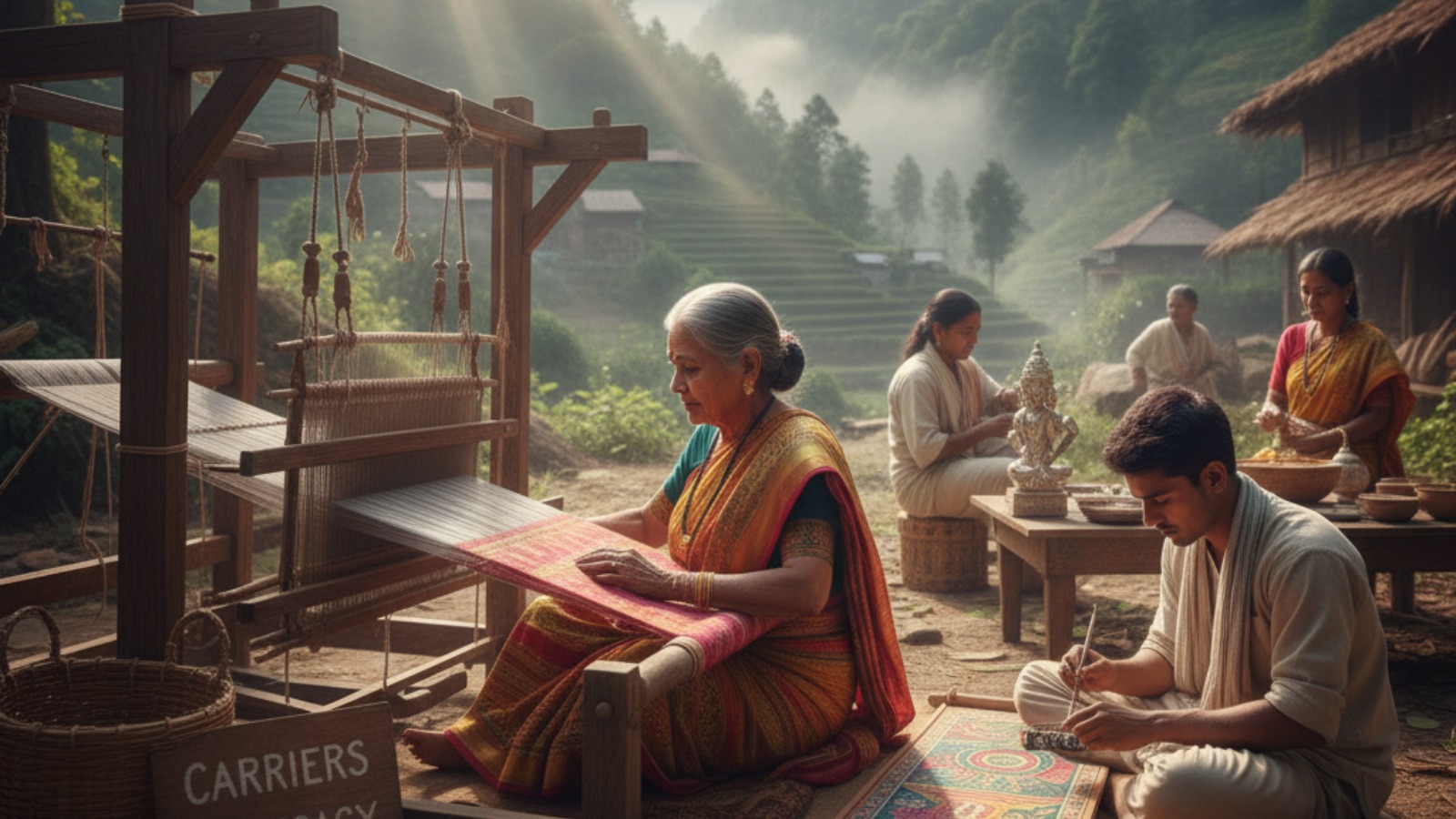Hands That Weave History
Craftsmanship at Padmesh is not just skill. It’s sacred continuity.

Why Craft Matters – Now More Than Ever ?
In a world obsessed with AI, fast fashion, and “minimal effort” creation – we take a stand.
For slowness. For sacredness. For human hands.
Because what cannot be rushed… becomes rare.
And what becomes rare… becomes precious.
Not because it’s expensive – but because it’s irreplaceable
When a Hand Touches Metal, Wood, or Thread – Something Spiritual Happens
At Padmesh, we honour the invisible.
The pause before the carving begins.
The prayer whispered before silver is melted.
The generations held within a gesture, a curve, a weave.
Every Padmesh creation , whether sculpted, painted, embroidered, or cast – is born of human hands steeped in ritual, repetition, and reverence.
This is not just craftsmanship.
This is cultural memory made tangible.


Upliftment That Goes Beyond Employment
To “support artisans” is not a line in our pitch – it’s our purpose.
• We ensure fair, sustaining income – not based on number of hours, but number of generations carried in the craft.
• We offer dignity in representation – each collection proudly credits the community or family that shaped it.
• We build safe, soulful spaces – where our makers are not invisible engines, but visible custodians. Craftsmanship is not just hands at work. It is hands in communion – with ancestry, with future, with the earth itself
Workshops That Feel Like Temples
In an age of mechanisation, Padmesh spaces are deliberately slow.
The tools are simple. The materials are few.
But the discipline? Unshakable.
Each workshop is a living sanctum – filled with:
• Silence punctuated by the clink of chisels
• Shared meals, stories, and songs
• Apprenticeships passed down like sacred scripts
We don’t measure output by speed or volume.
We measure by truth – does the piece carry presence?
If not, we start again.


More Than Artisans – They Are Carriers of Legacy
Our makers are not factory workers or subcontractors.
They are the soul of the brand.
They come from:
- Tribal communities who learned their craft before they learned to write
- Mountain villages where looms sing older than calendars
- Specially-abled creators who may move differently, but craft with unmatched intention
- Legacy families of Cuttack, who have breathed life into silver filigree for over 400 years
Their hands don’t just follow instructions.
They follow intuition.
Each decision – every line, every stitch – is a quiet negotiation between mastery and magic
Meet the makers. Witness their rhythm. Carry their story